Text
Social Media - Social Justice
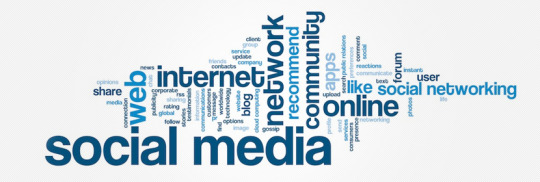
https://goo.gl/images/xxVbjo
Social Media gives people the ability to communicate with millions of people around the world quickly. It can be used as a powerful tool to spread social messages. Social media gives individuals a space to globally speak out about social injustices and bring awareness to push for change. With the help of social media we can engage the public in activism campaigns. The internet and digital tools can bring people that have the same interests, concerns, problems, hopes and dreams together. It can be a catalyst for creating communities with other like-minded people. Digital Tools are a form of power that
SOCIAL MEDIA consists of the internet, mobile phones, social media sites such as Facebook, Flickr, Google+, Instagram, Linkedin, Ozone, Pinterest, Reddit, Tumbler, Twitter, YouTube, VK, Weibo, etc. Currently, these are all a free way to share information. People can engage with others to organize events, lobby,raise funds, petitions, etc.Change.org is an activism site that allows you to write an online petition that you would like to be circulated that focuses on change. Another activism site that provides valuable information and also allows people to submit online petitions is MoveOn.org. Twitteris a micro-bloggingsight that helps share a variety of topics with many users. You can only type 280 characters per "tweet." Twitter has a hashtag#option - a hashtag and then a key word or phrase that is used to describe a topic. Twitter uses hashtags in their tweets so that the messages are categorize, thus making it easier for others to follow the topics.Black Twitterconnects users from around the world. It is a virtual community that provides information for sociopolitical changes. Facebook.comis a social media website that allows the user to connect through posts. Users can also live chat, stream live videos, share photos, music, articles, and links with friends, family, co-workers, strangers, and join closed and open groups. Individuals can set up an entire campaign with both online and offline features. TheSocial Justice Centeris a Madison community based non-profit organization that uses Facebook to share their information and assist individuals. The Social Justice Solutionsis a Facebook forum for individuals to use to create a society for social change. Blogsites such as Tumblerand WordPressare very popular sites that are platforms for inexperienced to experienced bloggers to create a personal blog site. Individuals use blogs for various reasons, My Heart of Mexicoand NBC Asian Americaare two blogs about ethnicity and culture. Mobile phones are digital tools that can share messages and photos. Ushahidiis an app that you download on your phone that allows people to send texts and photos that can be mapped through the Google Maps platform. This app can help track locations of natural disasters, protest marches, violence, and share information of what is going on in our world. The Internetoffers worldly news and knowledge.
Social activists can reach out to millions of people when using social media as a communication platform. During the Civil Rights Movement, dial telephones, newspapers, door knocking, postal service, passing out flyers, or word of mouth were the only ways information was spread. There was 250,000 people at the March on Washington in 1963 that heard Martin Luther King's speech, "I Have a Dream." I wonder how many more people would have attended if there was access to social media back then. Today, we have many information sharing sources to use for spreading the word globally. People can use social media for their own personal protest for change or join other like-minded groups to support their protests. Posting our voices over social media gives us a safe place without violence when participating in digital activism. Some people feel more secure when they voice their opinions on social media compared to face-to-face conversations However, activists and individuals are not completely free from harm. Cyberbullying, cyberterrorism, predator stalking, hijacking profiles, and hacking can be done to any individual's or social media sites. People need to be vigilant protecting their privacy and keeping themselves safe.
In the article, Why White People Don't Like to Talk About Race, the author writes, "Whites who care about race know the sins of our forefathers and feel a constant sense of low-grade guilt. We have no idea how to make amends for the injustices of the past. We also kind of feel guilty about feeling guilty because, after all, we had nothing to do with that. To exacerbate matters, most of us aren’t aware that those historic injustices propagated a system that favors white people and rules with a velvet-gloved iron fist to this day." (Piper, 2015) This quote rings true for me. I have learned about many racial and social injustices that occurred throughout America's history in a course at UW-Milwaukee course, Multicultural America.I am bewildered that some of these same cultural inequalities, biases, discrimination, unfairness, and injustices are occurring to this day. Some privileged American's don't see the inequalities that are happening around them. Some American's don't know what they can do to stop the injustices. Some people were never exposed to racial differences and don't know how to talk about it.
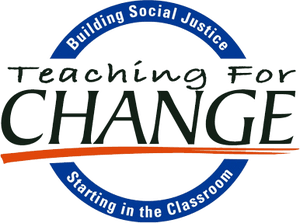
https://goo.gl/images/wVN8jZ
That is the reason for my blog - Teaching for Change. Teachers and families need to know how to talk about ethnicity and racial differences. We need to make a change and create a future free from stereotyping, discrimination, prejudice, and bias. This can be accomplished by learning acceptance, compassion, empathies, and awareness. As an educator and a parent advocate, I feel it necessary to ensure that our youngest students grow up in a multicultural world free of biases and prejudices.
“Children from very young ages internalize messages about power and privilege with regard to gender, race/ethnicity, class, sexual orientation, and language, which they perpetuate through their play and talk. While families are a critical piece in shaping children’s values on such matters, classroom practices communicate and reinforce strong, subtle, and repeated social messages about what is and is not valued. The consequences of these messages are enormous not only for individual children, but also for a society that strives for equality and justice for all.”(Hyland, 2010)
It is true that families are often the first place where children learn about prejudices and biases. However, in early childhood and preschool programs, we can reinforce messages about acceptance and "equality and justice for all" through teachable moments. Everyday teachers have opportunities to use teachable moments to describe what it means to support a person, even if they are different than them. Teachers can begin talking about injustices and fairness by developing an equity-based, critically conscious, anti-biased emergent curriculum and learning environment. Teachers can also support children's learning through listening, asking open-ended questions, through age appropriate culturally sensitive activities, anti-bias and culturally sensitive books, and inviting families and community members into the classroom. Culturally relevant teaching introduces children to class, race, ethnicity, gender, and sexual orientation. Through culturally relevant teaching, children learn about kindness, acceptance, diversity of ethnic and racial groups (such as The Help Movie portrayed) and it can explain what cultural and societal norms are (such as Modern Family the TV series). Culturally relevant teaching involves learning about a child's home culture so that teachers can create curriculum that is relevant to the child's life. If we help children to think about issues of racial injustices (as in Mrs. Elliot's Brown-Eyed Blue-Eyed experiment), cultural differences, gender stereotyping, and gender identity, they will begin to understand that all people are of value and will learn to treat others with respect. We can encourage and empower even the youngest children to act against inequalities and injustices within their families, schools, and communities. Teachers can give children the age appropriate words to talk about fairness and justice so that all children can experience an equitable society.
Social Media sites to inspire a teacher's equitable societies teachable moments:
BLOG:
Bakers and Astronauts. Play at the Center. http://www.bakersandastronauts.com/journal/2018/5/20/play-at-the-center
Reggio-Inspired Preschool Environments - Transform Ed http://myclassroomtransformation.blogspot.com/search/label/Natural Materials
INTERNET:
Teaching Tolerance. Educating for a Diverse Democracy https://www.tolerance.org/
Helen Gordon Child Development Center https://www.pdx.edu/helen-gordon-center/
TWITTER:
Early Childhood https://twitter.com/search?q=early+childhood
Erickson Institute https://twitter.com/EriksonInst
FACEBOOK:
Reach Dane Head Start https://www.facebook.com/Reachdane.org/
Office of Child Care and Family Resources https://www.facebook.com/pg/UWMadisonOCCFR/posts/
INSTAGRAM:
Busy Bees Child Care
https://www.instagram.com/busybees_uk/?hl=en
BOOKS THAT TEACH EMPATHY AND COMPASSION
Why Am I Me? (ages 4-8 years) by Page Britt
Come With Me (ages 5-8 years) by Holly M. McGhee
Most People (ages 4-8 years) by Michael Leannah
Lovely (ages 4-8 years) by Jess Hong
One (ages 4-8 years) by Kathryn Otoshi
The Smallest Girl in the Smallest Grade (3-5 years) by Justin Roberts
Last Stop on Market Street (ages 3-5 years) by Matt de la Pena
Each Kindness(ages 5+ years) by Jacqueline Woodson
Peace Is an Offering (ages 3-5 years) by Annette LeBox
Pass It On (ages 3-7 years) by Sophy Henn
We're All Wonders (ages 4-8) by R.J. Palacio
REFERENCES:
Obar, Jonathan A., Zube, Paul, Lampe, Clifford. (2012) Advocacy 2.0: An Analysis of How Advocacy Groups in the United States Perceive and Use Social Media as Tools for Facilitating Civic Engagement and Collective Action. Journal of Information Policy. Vol. 2, pgs. 1-25. Penn State University Press. Retrieved from: https://www.jstor.org/stable/10.5325/jinfopoli.2.2012.0001
Digital and Online Activism. RESET.org. Retrieved from: https://en.reset.org/knowledge/digital-and-online-activism
Hyland, Nora E. (2010) Social Justice in Early Childhood Classrooms What the Research Tells Us. Young Children Research in Review. Retrieved from: https://static1.squarespace.com/static/553b1fe3e4b0bd2bbd388913/t/582500d13e00be283bf03414/1478820051465/dld-socialjustice.pdf
Joseph, Sarah. (2012) Social Media, Political Change, and Human Rights. Vol. 35, Issue 1, Article 3. Boston College International and Comparative Law Review. Retrieved from: https://lawdigitalcommons.bc.edu/cgi/viewcontent.cgi?article=1667&context=iclr
Khan-Ibarra, Sabina. (2015) The Case for Social Media and Hashtag Activism. The Blog, Huffpost. Retrieved from:https://www.huffingtonpost.com/sabina-khanibarra/the-case-for-social-media_b_6149974.html
Piper, Barnabas. (2015) Why White People Don't Like to Talk About Race. The Blazing Center. Conflict, Race. Retrieved from: https://theblazingcenter.com/2015/03/why-white-people-dont-like-to-talk-about-race.html
Nora Hyland, Social Justice in Early Childhood Classrooms, Young Children, January 2010
Paulo Freire Pedagogy of the Oppressed
https://selforganizedseminar.files.wordpress.com/2011/08/freire_pedagogy_oppresed1.pdf

https://twitter.com/search?q=reggio+emilia
0 notes
Text
The Help - Movie

The Help takes place in Jackson, Mississippi the year of 1963. This period of time was during the Jim Crow laws and racial segregation and discrimination in the southern United States. Even though the Civil War abolished slavery, blacks were still being discriminated against. The Jim Crow law, that Aibileen Clark was deathly afraid of, demanded racial segregation in all public places, such as public schools, public transportation - buses and trains, separate entrances to public facilities such as movie theaters and restaurants, separate drinking fountains and restrooms for whites and for blacks, and to go so far as prohibiting blacks from living in some towns, some black people couldn't vote because they couldn't pass a voter literacy test, and interracial marriage was illegal. The Jim Crow Laws were finally overruled by the Civil Rights Act in 1964 that was initiated by President John F. Kennedy before he was assassinated.
Upon returning from Ole Miss College, Skeeter Phelan (a white socialite woman) desired to be a famous write someday. Skeeter's publisher (Miss Stein) told her to write about what disturbs her. Skeeter became very uncomfortable with the racist attitudes and the disrespectful ways her wealthy socialite friends (Elizabeth Leefolt, Hilly Holbrook, Jolene French) acted towards their maids. It was those uncomfortable feelings that guided Skeeter to write a book depicting the view from the help - the maids. Skeeter's conversation with Miss Stein: "These colored women raise white children, and then in twenty years those children become the boss. We love them, and they love us, but they can't even use the toilets in our houses. Don't you find that ironic, Miss Stein?"
The main character in the movie, Aibileen Clark, is a black maid that takes care of Mae Mobley - Elizabeth Leefolt's daughter. Aibileen takes pride in her work as she states, "Taking care a white babies, that’s what I do, along with all the cooking and the cleaning. I done raised seventeen kids in my lifetime. I know how to get them babies to sleep, stop crying, and go in the toilet bowl before they mamas even get out a bed in the morning."Mae Mobley loved Aibileen. In one scene Mae Mobley caresses Aibileen's cheek and says, "You're my real mama, Aibee."
Minny Jackson is Aibileen's best friend and is notably "the best cook in Jackson, Mississippi." Minny is the maid of Mrs. Walters - mother of Hilly Holbrook. Because of Minny's temper, her brash tongue, and her attempt to use the Holbrook family bathroom, Hilly fired Minny.
Hilly was adamant that black people shouldn't use white people's bathrooms, "Tell Raleigh every penny he spends on a colored's bathroom, he'll get back in spades when y'all sell. It's just plain dangerous. They carry different diseases than we do." (Bathroom Segregation video https://youtu.be/E-g9PX-cAWs). Hilly sent her, "Home Help Sanitation Initiative," to the governor to sign - it would ban all black servants from using their white employer’s bathroom. All the maids in Jackson feared Hilly because she could destroy a maid if she had a grudge against them - which she unfairly did to Minny.
Aibileen, Minny, and Skeeter take on the task of revealing the truth (both good and bad) about the way southern white women and families treated their black maids and service people.
Skeeter first interviewed Aibileen, then Minny decided to help. Soon other maids came forward to share their stories of how they spent their entire lives taking care of southern families and the treatment they received from them. Skeeter also shared her story of being raised by a black maid, Constantine Jefferson, that worked for the family for 29 years. Skeeter loved Constantine like a mother and reveals how her mother broke Constantine's heart when she fired her. The maids believed that telling their stories to be published in a book, they were doing their part to end the inhumane treatment of the black people and it was their way to help with the Civil Rights Movement. The book was to be published anonymously, however, the women became fearful that their stories would be recognized in their small community and retaliation would ensue. Aibileen reveals that she was more afraid of authoring the book, than she was afraid of the "Jim Crow" laws. Minny reveals her "terrible awful" secret that she thinks will be insurance that could keep their stories a secret - her secret chocolate pie ingredients.
https://goo.gl/images/eHrZJE
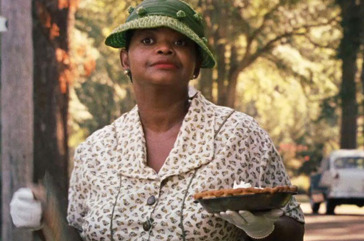
Video: https://youtu.be/8fgub5zkBVk
During the Reconstructionperiod, blacks began to take leadership roles and were pushing hard for legislative changes for equality. Trying to disregard the progress of the blacks and to keep blacks and whites separated, the "Jim Crow" laws were established. Skeeter obtained a copy of "The Mississippi Code of Conduct for Non-Whites" and began to read the laws that were being enforced on black people. Here are a few examples of the laws: Books were not to be used between the white and colored schools, they could only be used by the race first using them. Black barbers could not serve white women or girls. Anyone who printed, published or circulated materials about social equality between whites and negroes is subject to imprisonment. Interracial marriage was illegal. Most blacks couldn't vote because they were unable to pass a voter literacy tests. Blacks couldn't use the same public facilities as whites, nor live in many white towns, or got to the same schools as whites. During the Reconstruction period the Ku Klux Klan (KKK) was established to impose violence on both black and white leaders because they were wanting to reverse the laws and progress of the Reconstruction advancements. To further undermine the progress made, the US Supreme Court stated in the Plessy v. Ferguson case that facilities for blacks and whites could be "separate but equal." Years later, in the "Brown v. Board of Education"case the US Supreme Court made segregation illegal in the public schools. The Civil Rights Act of 1957, signed by President Eisenhower, declared that anyone trying to prevent someone from voting could be punished with federal prosecution. In 1963 the March on Washingtonwas a civil rights movement organized by Civil Rights leaders of Martin Luther King, A. Philip Randolph, and Bayard Rustin. It was a peaceful march of over 200,000 people to bring attention and to force civil rights legislation and job equality for everyone. Martin Luther King's "I Have a Dream" speech became the slogan for equality and freedom. The Civil Rights Act of 1964, signed by President John F. Kennedy, proclaimed equal employment for all and federal authorities could be used to make sure all public facilities were integrated. The Voting Rights Act of 1965banned the use of all voter literacy tests. 1968 the Fair Housing Act became a law that prevented housing discrimination based on race, national origin, religion and sex. Civil Rights Leaders and activists, Martin Luther King, Medgar Evers, Malcom X, and President John F. Kennedy all fought hard for the Civil Rights movement. However, during that time, they were assassinated.
The book was published and was a huge success - except Ms. Hilly didn't like it. Ms. Hilly read the book and immediately knew Chapter 12 of the book was about her. She threatened Skeeter with a law suit but got no satisfaction from that threat. Aibileen got retaliation as Ms. Hilly pressured Ms. Elizabeth to fire her. The most touching part of the movie: https://youtu.be/FuyAt68pj3I
The cast of The Helps consists of Viola Davis as Aibileen Clark, Emma Stone as Eugenia "Skeeter" Phelan, Octavia Spencer as Minny Jackson, Jessica Chastain as Celia Rae Foote, Bryce Dallas Howard as Hilly Walters Holbrook, Allison Janney as Charlotte Phelan, Anna O'Reilly as Elizabeth Leefolt, Chris Lowell as Stuart Whitworth, Sissy Spacek as Mrs. Walters, Cicely Tyson as Constantine Bates, Mike Vogel as Johnny Foote, Anna Camp as Jolene French, Brian Kerwin as Robert Phelan, Aunjanue Ellis as Yule May Davis, Ted Welch as William Holbrook, Wes Chatham as Carlton Phelan, Shane McRae as Raleigh Leefolt, Roslyn Ruff as Pascagoula, Tarra Riggs as Gretchen, LaChanze as Rachel Bates, Mary Steenburgen as Elaine Stein, Leslie Jordan as Mr. Blackly, David Oyelowo as Preacher Green, Dana Ivey as Grace Higginbotham, Tiffany Brouwer as Rebeca, Carol Lee as Pearly, Carol Sutton as Callie, Ashley Johnson as Mary Beth Caldwell, and Nelsan Ellis as Henry.

https://goo.gl/images/muZWkr
How do children learn about race, biases, and prejudice? Racism is how people interpret, adopt, and repeat inequality. Are we born with preconceived concepts of racism? Babies are born capable of learning things without being taught - how to suck for nourishment, how to make sounds to communicate, how to crawl, and they learn to talk by listening to others. As children grow they learn to sort things by colors and shapes. At an early age they begin to sort their world and form their own ideas. Children use this cognitive development to sort people too. However, they are not forming racism, they are observing and categorizing. Erin N. Winkler from the Africology Department at the University of Wisconsin-Milwaukee has studied the topic of "how children form their ideas about race during early stages of development" (https://www.wiscontext.org/how-kids-learn-about-race-stereotypes-and-prejudice).
"As curious young minds begin to figure out shapes and colors, they're also seeing visible differences among people and determining their own identities - including racial awareness. Of course, this development doesn't mean that children are inherently bigoted - rather, their thinking about race stems from normal processes of observing and categorizing." (Winkler, 2009)
Studies have been conducted as far back as the 1940s-1950s when Mamie and Kenneth Clark did their "Doll Study." The study gave African-American children a choice between a black doll and a white doll. (The Life and Challenges of Mamie and Kenneth Clark: https://youtu.be/kG90mSaWUpE). The majority of the children preferred the white doll and gave more positive qualities to the white doll.
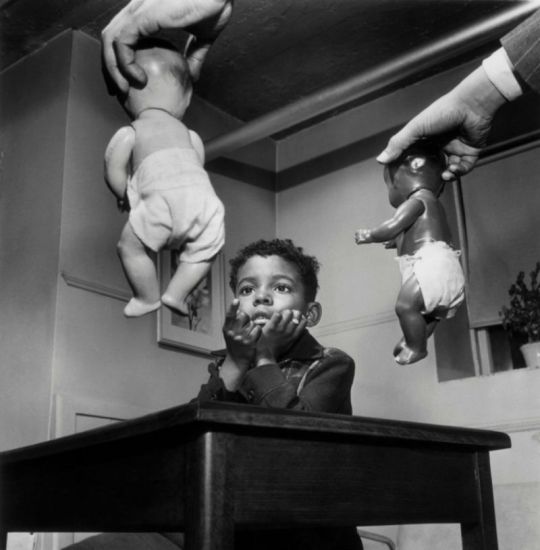
https://goo.gl/images/28mA1j

https://goo.gl/images/nhLMcJ
There was a racism experiment conducted in a classroom by a 3rd grade teacher, Jane Elliott from Riceville, Iowa. Her experiment was carried out after the assassination of Martin Luther King. She wanted her students to internalize and begin to understand what racism and discrimination felt like. Brown Eyes and Blue Eyes Racism Experiment: https://youtu.be/KHxFuO2Nk-0. In Jane Elliot's experiment she began by dividing her students into two groups of eye colors - The Brown-eyed group and The Blue-eyed group. She told the children that the children with brown eyes were "superior and smarter" and gave them extra privileges and praise. She then told the children with blue eyes they were "inferior, unruly, and untrustworthy," and treated them like second class citizens. The next day roles were reversed. Jane Elliott was shocked at what she seen. “I watched what had been marvelous, cooperative, wonderful, thoughtful children turn into nasty, vicious, discriminating little third-graders, in the space of 15 minutes.” Jane Elliot explained to the children that what they learned over the last two days was "a filthy, nasty word called discrimination," which means "treating people a certain way because they are different." Through her experiment, she was able to teach the children what it felt like to be victims of prejudice.
At the University of Yale's Baby Lab that supports the research of Erin N. Winkler. Are babies born with a type of bias? is produced by CNN's Anderson Cooper as he visits the University of Yale's Baby Lab where researchers study the minds of infants - https://youtu.be/3EoNYklyShs.
Two more studies were conducted from the University of Yale's Child Study Center where they investigate human development to understand the mental health of children. In 2010, AC360°team reinvestigated the original "Doll Study" to determine what are children's current racial beliefs, attitudes, preferences, and skin tone preferences at two different developmental stages. This is the outcome of that study: of Inside the AC360 Doll Study: https://www.youtube.com/watch?v=DYCz1ppTjiM. To further this Doll Study, parents were interviewed as to what their responses were about their children's answers in that study, I Was Upset of How My Child Views Race: https://www.youtube.com/watch?v=Sm_CfET1Ffg.
My understandings from the three videos and research is that racism or racial bias is a significant problem. If we don't believe it is a problem, then why are so many black children choosing the white dolls over their own skin toned black dolls?

https://goo.gl/images/yqg5Ks
Kids on Race: The Hidden Picture did another study: A Look at Race Relations through a Child's Eyes. This study interviewed 145 Kids at 6 schools across 3 states. The children were majority white, majority African American, and racially diverse. Children were shown two pictures with one white and one black child, both near a swing. The study reveals that 70% of white children interpreted there was something negative happening, as opposed to only 38% of the black children. https://i2.cdn.turner.com/cnn/2012/images/03/29/ac360.race.study.pdf
Skin Color - The Way Kids See It (https://youtu.be/JcAuO0PNnrs) shows that there is hope that change in children's perception or racism is shifting.
Kiri Davis, a young filmmaker, conducted a documentary, A Girl Like Me: (https://youtu.be/z0BxFRu_SOw) that shows there is still a racial gap in our American Culture. In this video she interviews young African-American women and they discuss finding their own identities and being accepted. She also conducted her own "doll test" on 21 black children. 15 out of the 21 children chose the white doll. Why do African-Americans still feel the effects of racism so many years after the Civil Rights Movement?
What needs to happen to ensure children become more accepting of people of all races and cultures? "Children are aware very young that color, language, gender, and physical ability differences are connected with privilege and power." (Derman-Sparks) Jane Elliott stated: "Racism was something that people learned" - something adults need to stop displaying and teaching. Adults need to educate themselves, so they can be knowledgeable and accurate when talking to children about racial discrimination. We need to be aware of our own actions as children learn about their world and the people around them from their observations. We need to talk about what acceptance of all race and cultures should look like and feel like. We need to discuss openly, age appropriate conversations, about racial differences and treat people as equals, worthy, and have potential. Children should not be brought up as "colorblind" and not understanding what racism is. We need to empower children to be racially conscious and teach them how to combat inequality and discrimination. They need to learn how to celebrate diversity and to recognize their own identities. Children should be taught what it is like to live in an unequal society. Children should not learn about negative stereotypes, biases, or racism from social media, movies, or inappropriate role models. As we teach children, adults need to empower them in building a positive self-identity that can "develop critical thinking and the skills for standing up for oneself and others in the face of injustice." (Derman-Sparkes) Children need to learn about racism from a trusting adult that will teach them not to discriminate and to treat everyone equally - we are all the same, just a little different.
# I wonder how fast information could have spread and how many people would have been reached if digital activismwas available during the Civil Rights Movement #
CHILDREN'S BOOKS ON RACE AND RACISM:
All the Colors of the Earth by Sheila Hamanaka
All the Colors We Are: The Story of How We Got Our Skin Color by Katie Kissinger
Amazing Grace by Mary Hoffman
Chocolate Me! by Taye Diggs
Happy To Be Nappy by Bell Hooks
I Am Beautiful - When I Look at Me, I See....by Simona da Costa
It's Okay To Be Different by Todd Parr
Same, Same But Different by Jenny Sue Kostecki-Shaw
Shades of People by Shelley Rotner
Skin Again by Bell Hooks
The Colors of Us by Karen Katz
The Skin I'm In: A First Look at Racism by Pat Thomas
The Skin You Live in by Michael Tayler
We're Different, We're the Same by Bobbie Kates (Sesame Street)
Whoever You Are by Mem Fox
RESOURCES:
All the Colors We Are: The Story of How We Get Our Skin Color by Katie Kissinger
How Real Is Race? A Sourcebook on Rae, Culture, and Biology by Carol C. Mukhopadhyay, Rosemary Henze, Yolanda T. Moses
REFERENCES:
Derman-Sparks, L & A.B.C. Task Force. Anti-Bias Curriculum: Tools For Empowering Young Chilren. Retrieved from: https://www.teachingforchange.org/wp-content/uploads/2012/08/ec_antibiascurriculum_english.pdf
Derman-Sparkes, L., Tanaka Higa, C., Sparkes, B. Children Race and Racism: How Race Awareness Develops. Retrived from: https://www.teachingforchange.org/wp-content/uploads/2012/08/ec_childrenraceracism_english.pdf
Forgerson Hindley, A & Olsen Edwards, Julie (2017) Early Childhood Racial Identity - The Potential Powerful Role for Museum Programming. Journal of Museum Education 2017, VOL 42, NO 1, PGS. 13-21 Retrieved from: https://www.tandfonline.com/doi/pdf/10.1080/10598650.2016.1265851?needAccess=true
Jacobs, T. (2017) Are Babies Born Biased? Pacific Standard Magazine. Retrieved from: https://psmag.com/social-justice/are-babies-born-biased
NAEYC Pathways to Cultural Competence Project. Montana Early Childhood Project. Vol. 7. Retrieved from: https://www.mtecp.org/pdfs/Christy/7NAEYC%20PCCP.pdf
Online Report for CNN Anderson Cooper 360° Special Report “Kids on Race: The Hidden Picture” (2012) Retrieved from: https://i2.cdn.turner.com/cnn/2012/images/03/29/ac360.race.study.pdf
Winkler, E.N. (2016) Children are not Colorblind: How Young Children Learn Race. University of Wisconsin-Milwaukee. Retrieved from: https://inclusions.org/wp-content/uploads/2017/11/Children-are-Not-Colorblind.pdf
You is kind. You is smart. You is important.
0 notes
Text
Modern Family - TV series
Modern Family
Modern Family is an American mockumentary family sitcom. Episodes were filmed in a nameless suburban neighborhood in Los Angeles, California. It was taped in a single-camera style of filming where a cameraman videos and interviews each of the family members during their everyday lives. The premise of creating Modern Family was taken from the creators Christopher Lloyd and Stevin Levitan's stories about their own families and experiences.
The foundation of Modern Family revolves around experiences of three types of families that make up a single family - a traditional family with children, a step-mother/father family with mine/our children, and a same-sex couple with an adopted child family). The families are all interrelated to the patriarch of the family, Jay Pritchett.
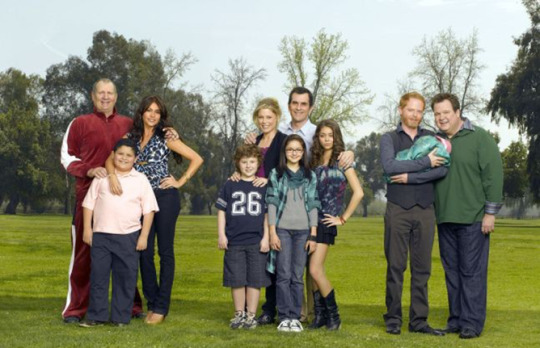
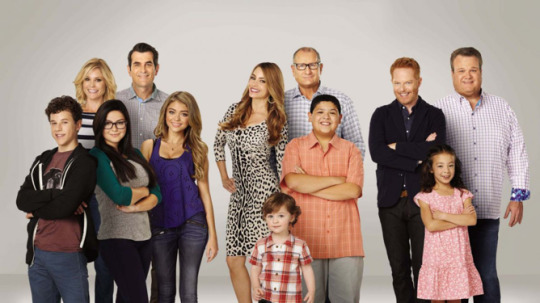
Jay (Ed O'Neil) is married to a much younger Colombian women, Gloria Pritchett (Sofia Vergara). Gloria has a son by a previous marriage, Manny Delgado (Rico Rodriguez). Jay and Gloria have an infant son Joe Pritchett (Jeremy Maguire/Rebecca and Sierra Mark/Pierce Wallace). Jay's daughter Claire Dunphy (Julie Bowen) is married to Phil Dunphy (Ty Burrell) and they have three children - Haley (Sarah Hyland), Alex (Ariel Winter) and Luke (Nolan Gould). Claire was a stay-at-home but went back to work after the children weren’t needing her as much at home. Jay's son Mitchel Pritchett (Jesse Tyler Ferguson) is married to Cameron Tucker (Eric Stonestreet) and they have an adopted daughter from Vietnam, Lily Tucker-Pritchett (Aubrey Anderson-Emmons/Jaden Hiller/Ella Hiller).
The ABC shows depict how we perceive others and the families exhibit what we see on a daily basis as a "modern-day family," in our diverse society. Watching Modern Family became a little addicting. I skipped around through the seasons and enjoyed many of the episodes. Some of the episodes made me think about ... How does a person teach young children about diversity, culture, and race in hopes to reduce prejudices, biases, and stereotypes? How do we teach and reinforce acceptance and respect towards diverse family situations and the variety of cultural backgrounds of children? As in Modern Family, our society has an endless variety of family and living situations. A child's norm in one house may be different from another child's norm. Children should be given many opportunities to understand diversity with acceptance, so they will respect the different living situations of their community and school to form friendships and respect family's loved ones.
Exploring diverse family structures as a teacher can be intimidating because, to a family it may look as if I'm going against their family's religious beliefs. In reality, families within a child's classroom could consist of a traditional one mom-one dad family, a single parent family, families with two moms or two dads - LGBT, some children live with foster parents, non-parent relatives as guardians - grandparents, aunt, etc., some live in a blended family - with their biological parent and another parent figure, unmarried biological parents, some children live with adoptive families, which could be multi-race.
All these wonders and reality of my classroom experiences sparked my search in finding resources that would support the anti-bias work that I foster. Below are some very good youtube videos describing what a family is and what family diversity may look like.
Different Types of Families https://youtu.be/45BVuY9gE5Q
Our Family: A Film About Family Diversity https://www.youtube.com/watch?v=cTqC4U_98Xo (an EXCELLENT video)
What is a family? https://youtu.be/IdyGAjj2xAw
Children and Families Around the World https://youtu.be/y2r2C26RCYs (Awesome video)
No matter what type of family a person lives in, society needs to be accepting and welcoming to the many different structures that make a family. To ensure children develop a strong sense of self, the early years must create a community that not only welcomes all families, but also celebrates them. Going through City, State and National Accreditation for my previous Licensed Family Child Care business, it was stressed to share stories where children should see their family represented in picture books. Books help to teach and reinforce that families come in many different combinations. That was many years ago, so listed below are some of my favorite books, and some that are more recently published.
Family Diversity
Abuela Arthur Dorros
Black is Brown is Tan Arnold Adoff
Families Susan Kuklin
Families Shelley Rotner and Sheila M. Kelly
Families are Different Nina Pellegrini
Families, Families, Families Suzanne and Max Lang
Fred Stays With Me! Nancy Coffelt
Molly and Her Dad Jan Ormerod
My Family Is Forever Nancy Carlson
Over the River and Through the Woods Linda Ashman
Sometimes It's Grandmas and Grandpas: Not Mommies and Daddies Gayle Byrne
The Family Book Todd Parr
The Great Big Book of Families Mary Hoffman
Adoption
A Mother for Choco Keiko Kasza
And Tango Makes Three Justin Richardson
Dear Child John Farrell
Elliot Julie Pearson
Home At Last Vera B. Williams and Chris Raschka
Tell Me Again About the Night I Was Born Jamie Lee Curtis
The Mulberry Bird Anne Braff Broadzinsky
We Belong Together: A Book About Adoption and Families Todd Parr
Same Sex Marriage
A Tale of Two Daddies Vanita Oelschlager
Daddy, Papa, and Me Lesea Newman
Donovan's Big Day Leslea Newman
Heather Has Two Mommies Leslea Newman
Mommy, Mama, and Me Leslea Newman
Stella Brings the Family Miriam B. Schiffer
The Different Dragon Jennifer Bryan
The Tale of Two Daddies Vanita Oelschalager
Uncle Bobby's Wedding Sarah S. Brannen
Gender Identification
10,000 Dresses Marcus Ewert
Backwards Day S. Bear Bergmann
Bib Bob, Little Bob James Howe
Fire Engine for Ruthie Leslea Newman
I am Jazz Jessica Herthel and Jazz Jennings
Introducing Teddy: A gentle story about gender and friendship Jess Walton
It's Okay to Be Different Todd Parr
Jacob's New Dress Sarah and Ian Hoffman
My Princess Boy Cheryl Kilodavis
The Boy with Pink Hair Perez Hilton
Connecting back to Modern Family, specifically the character of Lily, this is a topic that some of the families within my classroom may need support in:
Kirby, G. and Morawska, A. (2017) How to talk to your kids about today's same-sex marriage postal survey results. The Conversation. Retrieved from: http://theconversation.com/how-to-talk-to-your-kids-about-todays-same-sex-marriage-postal-survey-result-87357http://theconversation.com/how-to-talk-to-your-kids-about-todays-same-sex-marriage-postal-survey-result-87357
Diversity versus Multiculturalism
Diversity describes similarities and difference between people. The similarities and differences can include race, gender, and sexual orientation.
Multiculturalism is more complex than acknowledging similarities and differences between people. Multiculturalism focuses on respecting, acknowledging and understanding unequal power in society. Society acknowledges and embraces similarities differences in others as we accept them in our multicultural world.


https://goo.gl/images/w1ZAry https://goo.gl/images/Tbx6HZ

To help children understand multiculturalism, they need to become familiar with diverse cultural customs, traditional clothes, music, art, ethnic foods - family favorite foods that are traditional or non-traditional.
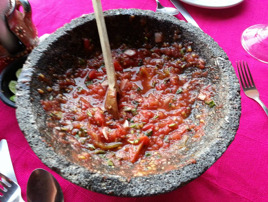
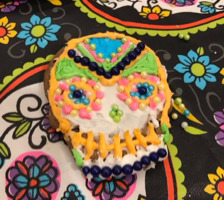
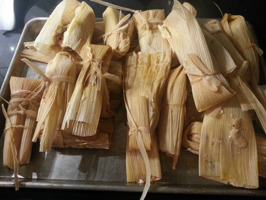
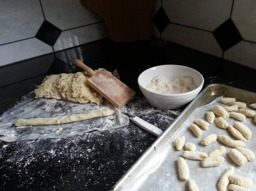


Family traditions...through generations.
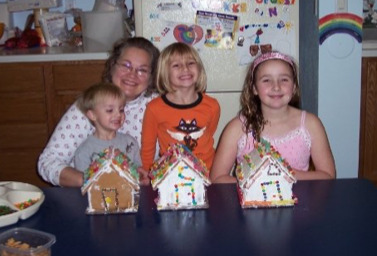
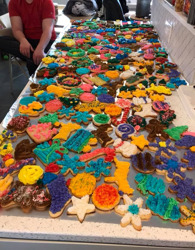
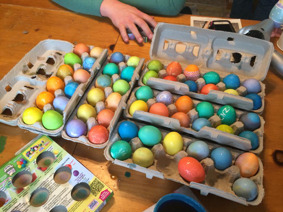
Anti-bias lessons help preschoolers hold up a mirror to diversity
https://www.youtube.com/watch?v=s3iM7yIhde0
In many communities, there are families of different skin colors, different religions, different cultures, different values, and different socioeconomic levels.Valuing these diversities enhances our communities moral, social, emotional, intellectual, political, and spiritual life. When a community understand that we have similar and different beliefs and interests, it will encourage cohesion and cooperation. However, when one person thinks and believes they are better than another person who is different from them, that can be labeled as bias. Bias comes in many forms as: prejudice, discrimination, and racism. People of color face many racial disparities and structural barriers such as obtaining affordable housing, finding employment that pays a livable wage, receiving quality healthcare, and getting equal education.
Racism has been part of American history for decades - we need to bring awareness and find solutions to inequalities and racism like the character in my next post, Eugenia "Skeeter" Phelan did in the movie "The Help."
Resource:
Gay, G. (2013) Teaching to and Through Cultural Diversity. The Ontario Institute for Studies in Education of the University of Toronto Curriculum Inquirery.
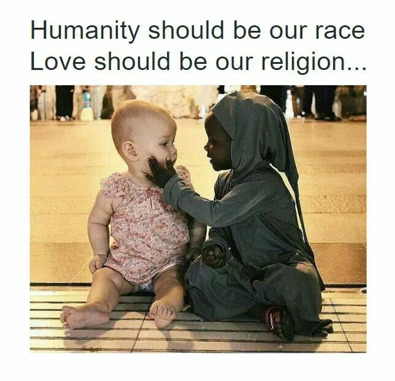
https://goo.gl/images/k3Qrj8
0 notes
Text
My Cultural Journey Where I came From and Where I am Going...
Part of my family moved to Wisconsin when I was 4 years old. We left all our family and the only city and state my mom ever knew. I grew up in a blue-collar household that was Catholic, democrats and lived in a trailer park. My mom was a stay at home parent, my dad worked in a factory that made steel machinery paper rolls for papermills. My mom quite school in the 11th grade and my dad never finished 9th grade of high school. None of my six siblings went on to any trade school, 2-year or 4-year college. They were secretaries or laborers. We always had a home cooked meal at 5:30 pm during the week days and a large 1:00 pm meal on Sundays - after church and the reading of the WI State Journal Sunday paper. I was raised in the Catholic faith, went to church every Sunday and every morning through grade school as I went to a Catholic school 1st grade to 11th grade of high school. I had to go to a large public high school my senior year of high school - since I didn't have any interest in going to college, my mother decided she didn't want to pay for private school any longer. I got married at 17 and divorced at 56. I was the second person in my family that got divorced - my older brother and I (I was greatful my mother had passed before my divorce).
Growing up and learning in the Catholic school did not expose me to diversity, ethnicity, culture, or race. One year in elementary school we had a 'black' girl come to our school - we had no other race enroll throughout my years of schooling. As I lived a very sheltered life, my senior year was quite different. I was the minority at my new school since most of the student population was African American and a few Native Americans. I can truly say that this was my first and only culture shock I had ever experienced. The difference in culture was a little devastating and the “unfamiliar” scared me. When I had my first child at 19, I did not want to raise her in the town that seemed now unfamiliar to me. The three of us moved to a little country town in northern Wisconsin - sheltered once more from the real world to raise my growing family.
Looking back on my childhood, I was never brought up in a prejudice or racist family, however I was never exposed to any cultural or racial diversity either. As I think back, I wonder if that was why I was in a state of shock and disbelief my senior year. I didn't realize what was happening on the other side of the river, never intermingled with public school kids, and my parents were not socialites and kept to themselves. I was sheltered....I was oblivious to the real world.
Relocating our family from our sheltered country home to a small village in a bedroom community of Madison, Wisconsin - which was rich in cultural diversity, I began to see the world differently and I knew my children needed to be exposed to more diversity so they would never experience a culture shock the way I did. All children deserve to learn about their world and experience knowledge of our diverse society and know more about the Modern Family that lives in today's world.
“It is not the fault of the children that they grow up to see a majority of power and influence concentrated among one race,’’ she says. “So if we don’t act in their lives, as they age, to show context to that imbalance, they may continue to believe that one group is better or worse than the other, based on nothing more than color, features, or expressions.’’(Burnett, 2012)
For more information:
Teaching Young Children About Bias, Diversity, and Social Justice
https://www.edutopia.org/blog/teaching-young-children-social-justice-jinnie-spiegler
How Kids Learn About Race, Stereotypes and Prejudice
https://www.wiscontext.org/how-kids-learn-about-race-stereotypes-and-prejudice
REFERENCE:
Burnett III, James H., (2012) Racism Learned. Boston Globe. Retrieved from: https://www.bostonglobe.com/business/2012/06/09/harvard-researcher-says-children-learn-racism-quickly/gWuN1ZG3M40WihER2kAfdK/story.html
1 note
·
View note